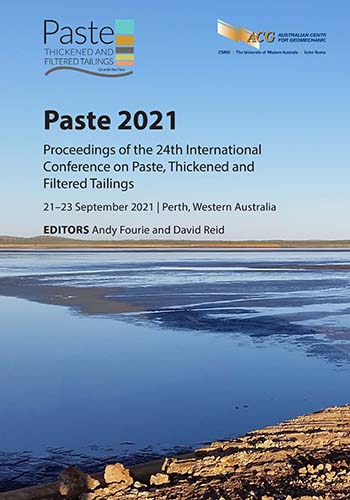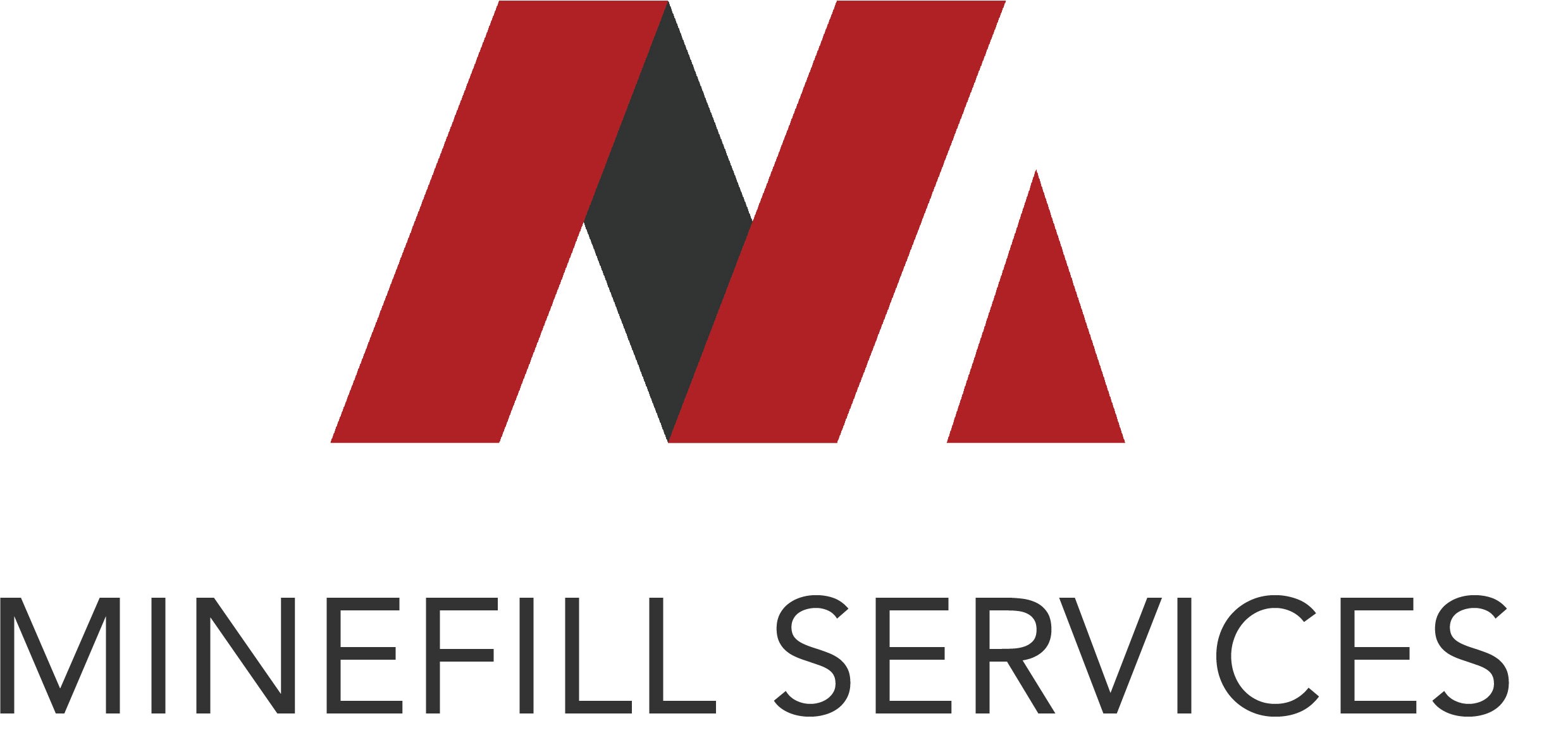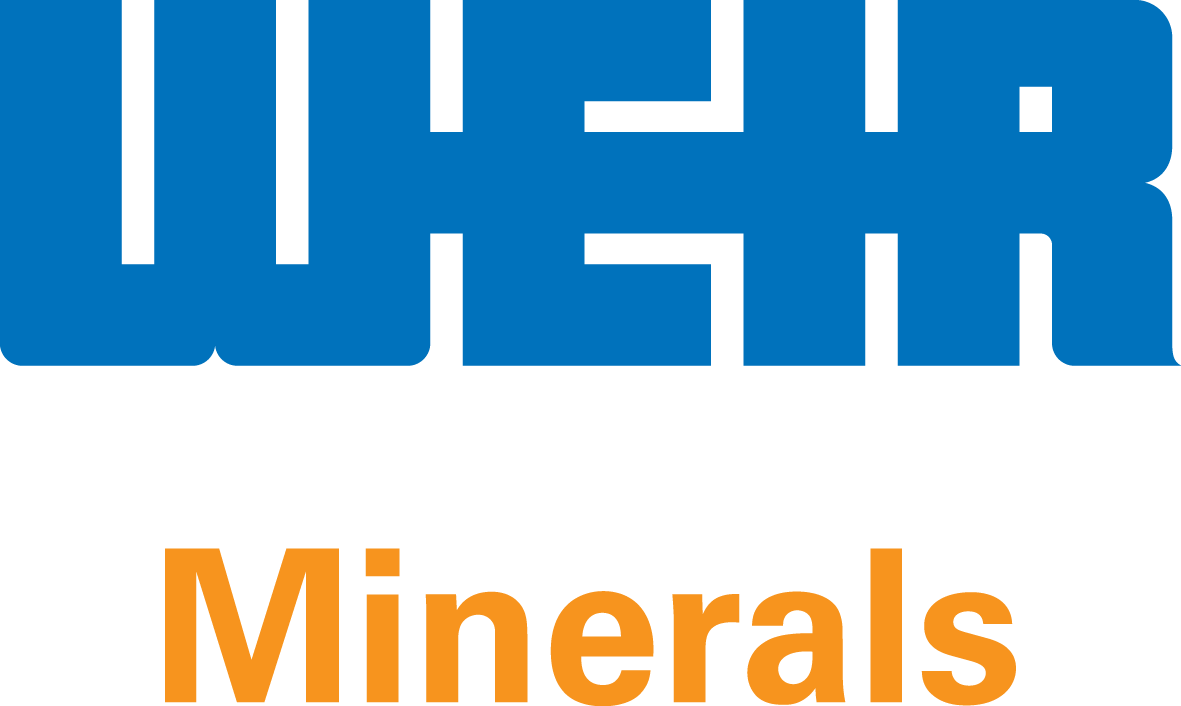The balance between energy and water preservation in the deposition of dry tailings in wet climates

|
Authors: Kruyswijk, JB |
DOI https://doi.org/10.36487/ACG_repo/2115_13
Cite As:
Kruyswijk, JB 2021, 'The balance between energy and water preservation in the deposition of dry tailings in wet climates', in AB Fourie & D Reid (eds), Paste 2021: Proceedings of the 24th International Conference on Paste, Thickened and Filtered Tailings, Australian Centre for Geomechanics, Perth, pp. 145-156, https://doi.org/10.36487/ACG_repo/2115_13
Abstract:
In the past two decades, the mining industry has become more interested in ‘dry’ tailings. The improved water recovery and potential operational cost benefits have been described by several authors. Compared with conventional tailings disposal, increasing the level of dewatering improves water preservation without having a major impact on operational costs. Dry tailings deposition is a method whereby in the deposition of the tailings, no free water is released. Ultimately, there are two varieties of dry tailings: paste tailings and filtered tailings. Paste tailings are dewatered to the maximum saturated density, whereas filtered tailings are mechanically dewatered to an unsaturated state. Saturated, loose, contractant tailings are susceptible to liquefaction; the primary mode of failure in most catastrophic tailings storage facility (TSF) failures. Consequently, well-compacted filtered tailings are increasingly considered for risk control. The prerequisite for long-term stability is that the filtered tailings remain unsaturated over time and are in a dense state. This condition may not be met in wet or seasonally wet conditions. When saturation of the tailings may occur, TSF design must make accommodations for sufficient drainage and containment of the stored tailings. Under these conditions, the key differentiator between paste and filtered tailings is the approximate 10% extra water recovery. The improved water recovery comes at the expense of a significant increase in power and fuel consumption. In circumstances where the increased spend on the latter two energy sources is offset by the value of the reclaimed water, it may be justifiable to consider the application of filtered tailings. From a sustainability point of view, the increased CO2 emissions will also have to be taken into consideration when selecting the preferred dry tailings deposition method. In this paper, it is demonstrated that in given applications the balance between energy consumption, water preservation, and CO2 emissions favours paste tailings deposition.
Keywords: paste tailings, filters tailings, high-density tailings, tailings management, water preservation, CO2 emissions, power consumption, fuel consumption, sustainability
References:
Adianshy, JS, Rosano, M & Keir, G 2015, ‘A framework for a sustainable approach to mine tailings management: disposal strategies’, Journal of Cleaner Production, vol. 108, part A, pp. 1050–1062.
Baker, E, Davies, M, Fourie, A, Mudd, G & Thygesen, K 2020, ‘Mine tailings facilities: overview and industry trends, in towards zero harm – a compendium of papers for the global tailings review’, in B Oberle, D Brereton & A Mihaylova (eds), Towards Zero Harm: A Compendium of Papers, Global Tailings Review, London,
Carneiro, A & Fourie, AB 2018, ‘A conceptual cost comparison of alternative tailings disposal strategies in Western Australia’, in RJ Jewell & AB Fourie (eds), Paste 2018: Proceedings of the 21st International Seminar on Paste and Thickened Tailings, Australian Centre for Geomechanics, Perth, pp. 439–454.
Caterpillar Inc. 2004, Caterpillar Performance Handbook Edition 35, Caterpillar Inc., Peoria.
Harmeling, M, Bosselaar, L, Gerdes, J, Boonekamp, P, Segers, R, Pouwelse, H & Verdonk, M 2012, Berekening van de CO2-Emissies, het Primair Fossiel Energiegebruik en het Rendement van Elektriciteit in Nederland (Calculation of CO2 Emissions, Primary Fossil Energy Consumption and the Efficiency of Electricity in the Netherlands), Department of Economical Affairs, Den Haag.
Javadi, S, Pirouz, B & Williams, P 2020, Filtered Tailings vs Thickened Tailings – A Holistic View, ATC Williams,
Jewell, RJ & Fourie, AB (eds) 2006, Paste and Thickened Tailings – A Guide, 2nd edn, Australian Centre for Geomechanics, Perth.
Möller, JHL, Paterson, AJC & Verbeek, T 2012, ‘Thickened tailings – a water and energy consumption perspective’, in RJ Jewell, AB Fourie & A Paterson (eds), Paste 2012: Proceedings of the 15th International Seminar on Paste and Thickened Tailings, Australian Centre for Geomechanics, Perth, pp. 213–224.
Moolman, PL & Vietti, A 2012, ‘Tailings disposal: an approach to optimize water and energy efficiency’, Platinum 2012: Proceedings of the Fifth International Platinum Conference: A Catalyst for Change, The Southern African Institute of Mining and Metallurgy Johannesburg, pp. 767–780.
Sofrà, F & Boger, DV 2002, ‘Environmental rheology for waste minimisation in the minerals industry’, Chemical Engineering Journal, issue 86, pp. 319–330.
Ulrich, B & Coffin, J 2013, ‘Considerations for tailings facility design and operation using filtered tailings’, in RJ Jewell, AB Fourie, J Caldwell & J Pimenta (eds), Paste 2013: Proceedings of the 16th International Seminar on Paste and Thickened Tailings, Australian Centre for Geomechanics, Perth, pp. 201–221.
Watson, AH, Corser, PG, Garces Pardo, EE, Lopez Christian, TE & Vandekeybus, J 2010, ‘A comparison of alternative tailings disposal methods — the promises and realities’, in RJ Jewell & AB Fourie (eds), Paste 2010: Proceedings of the First International Seminar on the Reduction of Risk in the Management of Tailings and Mine Waste, Australian Centre for Geomechanics, Perth, pp. 499–514.
© Copyright 2025, Australian Centre for Geomechanics (ACG), The University of Western Australia. All rights reserved.
View copyright/legal information
Please direct any queries or error reports to repository-acg@uwa.edu.au
View copyright/legal information
Please direct any queries or error reports to repository-acg@uwa.edu.au





